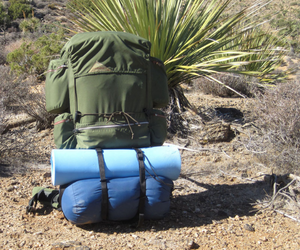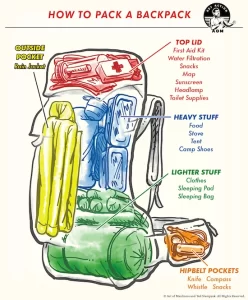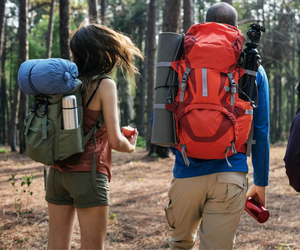How to Strap Sleeping Bag to Backpack | Best Methods
Backpacking is one of the best ways to explore some of the great and rarely visited areas in the out doors. But getting into backpacking can be difficult as you have to learn to fit everything you need to take into one small backpack. Sleeping bags are big and can be a struggle to pack but we will help explain how to strap a sleeping bag to a backpack.
There are a few different ways to strap a sleeping bag to a backpack, but one of the most common methods is to use the sleeping bag’s stuff sack and attach it to the bottom of the backpack using the straps or loops that are usually located there.
Strap to the Exterior
To strap a sleeping bag to a backpack using compression straps, first put your sleeping bag in its stuff sack and compress it as much as possible to reduce its size. Then, locate the compression straps on your backpack, which are usually found on the sides or front of the backpack. Thread the compression straps through the loops on the sleeping bag’s stuff sack, and then pull the straps tight to secure the sleeping bag to the backpack. You may need to adjust the placement of the straps and the tension on them to ensure that the sleeping bag is securely attached to the backpack and does not shift or move around while you are hiking.

Inside the Pack
It isnt vary common to pack a sleeping bag inside a backpack since they take up so much space and can easily be attached to the exterior. However, if you expect rainy conditions during the hike it can be beneficial to pack it inside your bag to keep it dry and protected.
To pack a sleeping bag inside your backpacking pack, first put your sleeping bag in its stuff sack and compress it as much as possible to reduce its size. Then, locate the main compartment of your backpack and place the sleeping bag at the bottom of the pack, towards the back. This will help balance the weight of the backpack and keep the sleeping bag from shifting or moving around while you are hiking. If your backpack has internal compartments or dividers, you can use these to help organize your gear and keep the sleeping bag in place. Once the sleeping bag is in the backpack, pack the rest of your gear around it, starting with the heaviest items and working your way to the lighter items. Be sure to distribute the weight evenly across the backpack and use the various straps and attachment points to secure your gear and keep everything in place.

On Top
Even though most packs have loops and straps for gear like a sleeping bag not every one wants to strap it to the sides or bottom of your pack. Having the sleeping bag on the lid of your backpack helps can make it easier to cary by having the weight centerd and up high.
First make sure to pack everything up as the sleeping bag will be the last thing in and the first thing off. You can use the straps or loops that are typically found on the top of a backpack to attach the sleeping bag, or you can use bungee cords or other types of straps to secure the sleeping bag in place. Another great way to secure a sleeping bag on top is using the stap buckles of the lid. It is also a good idea to cover the sleeping bag with a rain cover to keep it dry in case of rain or other inclement weather.

Conclusion
There are several ways to strap a sleeping bag to a backpacking backpack but it depends on person preference to find the right one for you. Trying all of the methods listed above can help you decide what feels the most comfortable and makes the most sense.
No matter which method you choose, it is important to distribute the weight evenly across the backpack and use the various straps and attachment points to secure your gear and keep everything in place.
